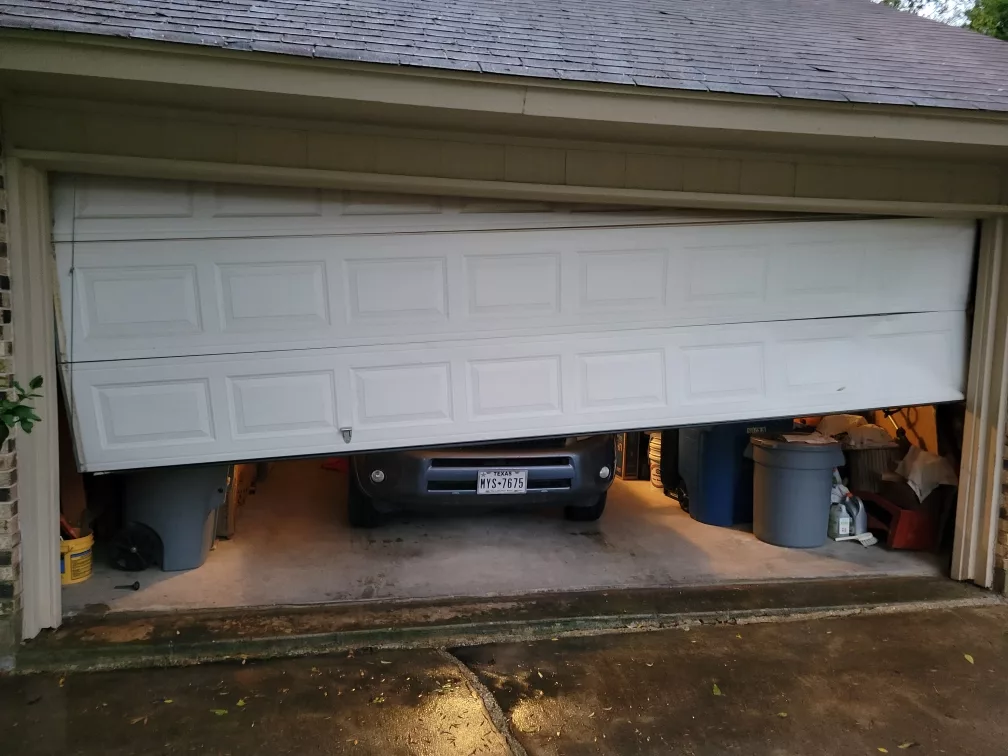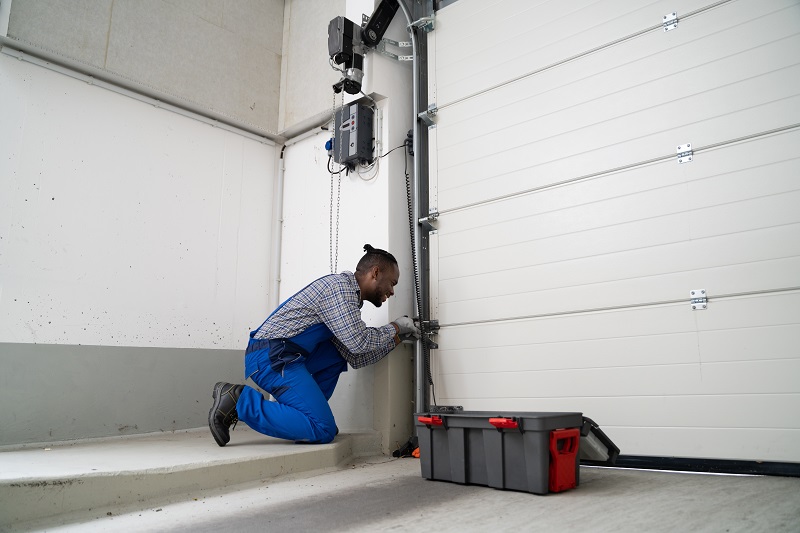Expert Garage Door Service for Smooth and Consistent Operation
Expert Garage Door Service for Smooth and Consistent Operation
Blog Article
Typical Garage Door Troubles and Just How to Repair Them
Garage doors are crucial for both protection and comfort, yet they commonly provide a range of typical problems that can frustrate homeowners. While some issues may show up simple to solve, others may need a much more nuanced understanding of garage door auto mechanics.
Noisy Garage Door Operation
A noisy garage door procedure can be a significant source of nuisance for house owners, usually suggesting underlying mechanical issues. Such disturbances may originate from different reasons, consisting of damaged rollers, loose equipment, or inadequate lubrication. Identifying the resource of the sound is vital for effective resolution.
One usual source of too much noise is the existence of rusty or worn-out rollers. Over time, these elements can deteriorate, causing grinding or squealing noises as the door steps. Regular assessment and substitute of these rollers can considerably lower noise degrees. In addition, loose bolts or screws in the door device can create rattling noises throughout operation. Tightening these bolts makes certain a more steady and quieter activity.
Another contributing aspect is poor lubrication of the door's relocating parts. Applying a high-grade lubricant to the tracks, springs, and rollers can considerably lessen rubbing and noise. Property owners ought to do this upkeep occasionally to keep optimum performance.
Finally, the garage door opener may likewise produce noise because of its age or mechanical problems. If the sound lingers regardless of dealing with other elements, getting in touch with a specialist for a comprehensive evaluation and prospective repair work may be required.
Door Won't Open or Shut
Experiencing a garage door that will not open up or shut can be exceptionally discouraging and typically indicates a malfunction within the system. Several elements can add to this issue, and identifying the source is necessary for efficient resolution.

Next, evaluate the safety sensing units situated at the base of the door. These sensing units can come to be misaligned or blocked by debris, preventing the door from running appropriately. Clean the sensing units with a soft towel and ensure they are lined up.
In addition, the garage door's internal elements need to be evaluated. Problems such as a busted springtime, worn-out rollers, or a damaged opener can hamper activity. If any elements show up to be harmed, it might be advisable to seek advice from a specialist for repairs.
Misaligned Tracks
(Exceptional Results)Misaligned tracks can seriously disrupt the smooth operation of a garage door, bring about functional failings such as unequal motion or complete immobilization. This issue typically emerges as a result of a range of elements, including wear and tear, unintended influences, or incorrect installation. When the tracks are misaligned, the rollers can not relocate openly, which not just strains the motor but likewise poses safety and security threats.
If you see any type of disparities, it is vital to deal with the concern quickly. Meticulously tap the track back right into its appropriate placement using a rubber club or a similar device, ensuring it is straight and level.
As soon as the positioning is dealt with, retighten the screws to secure the track. For a much more irreversible service, consider reinforcing the tracks with extra braces. Regular maintenance, consisting of cleaning up the tracks and making certain rollers are in great problem, can prevent future misalignments. By attending click for source to misaligned tracks promptly, you can restore the performance of your garage door and boost its longevity.
Broken Springs
Amongst the various elements of a garage door system, damaged springtimes are just one of the most typical problems that can substantially restrain its capability. Garage door springtimes are essential for balancing the weight of the door, enabling smooth opening and closing. When a spring breaks, it can lead to a door that is challenging to operate or, in many cases, totally inoperable.
There are two main sorts of springs: torsion springs, which are mounted over the door, and expansion springtimes, located on either side. Signs of a broken springtime consist of a door that will not open up, a visible gap in the spring, or a loud noise during procedure. Trying to run a garage door with a busted springtime can trigger additional damage to the door or the opener.
Repairing busted springtimes is not a do it yourself job; it needs specialized tools and expertise due to the high tension entailed. It is suggested to consult a specialist service technician that can securely replace the springs and make certain the door is effectively stabilized. Routine maintenance and inspections can aid protect against springtime failures and extend the life-span of the garage door system.
Remote Control Issues

If the remote still fails to run, evaluate the garage door opener to make sure that its sensors are clean and unobstructed. Dirt, particles, or imbalance may impede the signal transmission between the remote and the opener.
Disturbance from various other electronic devices can also restrain remote capability. Make sure that nearby devices, such as cordless routers or cordless phones, are not triggering disruptions. garage door service. If disturbance is presumed, try relocating these gadgets better far from the garage door opener
Sometimes, the remote might require to be reprogrammed. Speak with the maker's guidelines to reset the remote and synchronize it with the garage door opener. If all else falls short and the remote continues to malfunction, take into consideration speaking with an expert specialist for a comprehensive inspection and prospective substitute of the remote or opener.
Conclusion
(Friendly Experts)In summary, usual garage door troubles can significantly impact capability and safety. Addressing loud operation entails lubrication and tightening equipment, while concerns with opening or closing require assessment of source of power and sensing units. Misaligned tracks can be remedied through modification, although damaged springs necessitate expert treatment. Remote control malfunctions commonly arise from weak batteries or disturbance, which can be settled via substitute or reprogramming. Positive upkeep and timely fixings can make certain optimal performance and long life of garage doors.
Report this page